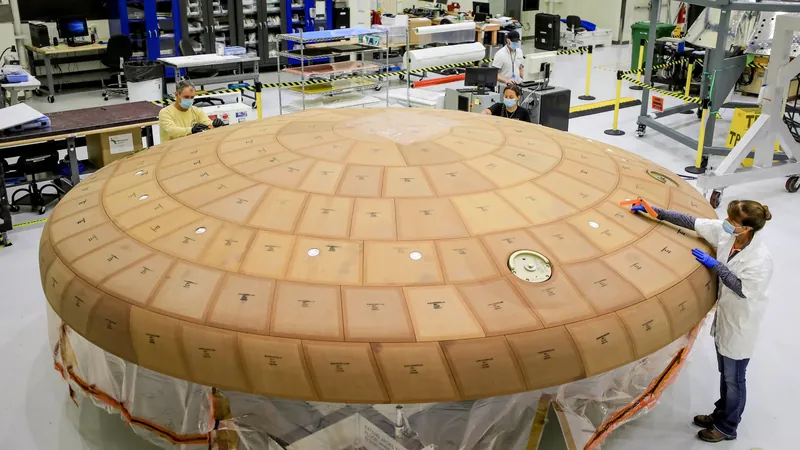
Unlocking the Future: How Spacecraft 'Sweat' to Survive Intense Reentry Heat!
2025-05-11
Author: Mei
An Ingenious Strategy for Reusable Spacecraft
Imagine spacecraft that sweat like humans to brave the blazing inferno of reentry into Earth's atmosphere! A groundbreaking team from Texas A&M University, in collaboration with Canopy Aerospace, is pioneering a revolutionary approach that could redefine space travel.
The Science of 'Sweating' During Reentry
This innovative design incorporates a technique known as transpiration cooling, where a special 3D-printed material emits a coolant gas along the spacecraft's surface. This layer acts as both a cooling agent and a protective barrier, shielding the spacecraft from the extreme heat generated during its high-speed descent.
Ditching Old Heat Shields for Efficient Travel
Gone may be the days of using single-use heat shields that burn away or heat-resistant ceramic tiles that require replacement. This clever technique could make reusable spacecraft more efficient and ready for another flight in record time!
Why Gas is the Game-Changer
Hassan Saad Ifti, an assistant professor of aerospace engineering, likens this gas insulation to wearing a puffer jacket. Just as air pockets trap heat, the gas released by the spacecraft's surface provides a thermal barrier that keeps the vehicle cooler.
A Material That Can Withstand Anything!
Developed by Canopy Aerospace, the new material made from 3D-printed silicon carbide is not only robust enough to endure extreme atmospheric pressures but is also porous enough to allow the coolant to effectively seep through. Early prototypes are undergoing rigorous testing to determine how well the gas insulates during hypersonic speeds.
The Exciting Road Ahead for Space Exploration
William Matthews, a fourth-year Ph.D. student spearheading the tests, anticipates the results will show a marked temperature difference on the material’s surface when coolant is introduced. The implications for this technology could expand the horizons for aerospace engineering and pave the way for the next generation of reusable spacecraft.
Investment in Innovation
This cutting-edge research is backed by a $1.7 million Air Force Small Business Technology Transfer grant, highlighting the significant potential of this innovative technology in future space missions.


 Brasil (PT)
Brasil (PT)
 Canada (EN)
Canada (EN)
 Chile (ES)
Chile (ES)
 Česko (CS)
Česko (CS)
 대한민국 (KO)
대한민국 (KO)
 España (ES)
España (ES)
 France (FR)
France (FR)
 Hong Kong (EN)
Hong Kong (EN)
 Italia (IT)
Italia (IT)
 日本 (JA)
日本 (JA)
 Magyarország (HU)
Magyarország (HU)
 Norge (NO)
Norge (NO)
 Polska (PL)
Polska (PL)
 Schweiz (DE)
Schweiz (DE)
 Singapore (EN)
Singapore (EN)
 Sverige (SV)
Sverige (SV)
 Suomi (FI)
Suomi (FI)
 Türkiye (TR)
Türkiye (TR)
 الإمارات العربية المتحدة (AR)
الإمارات العربية المتحدة (AR)